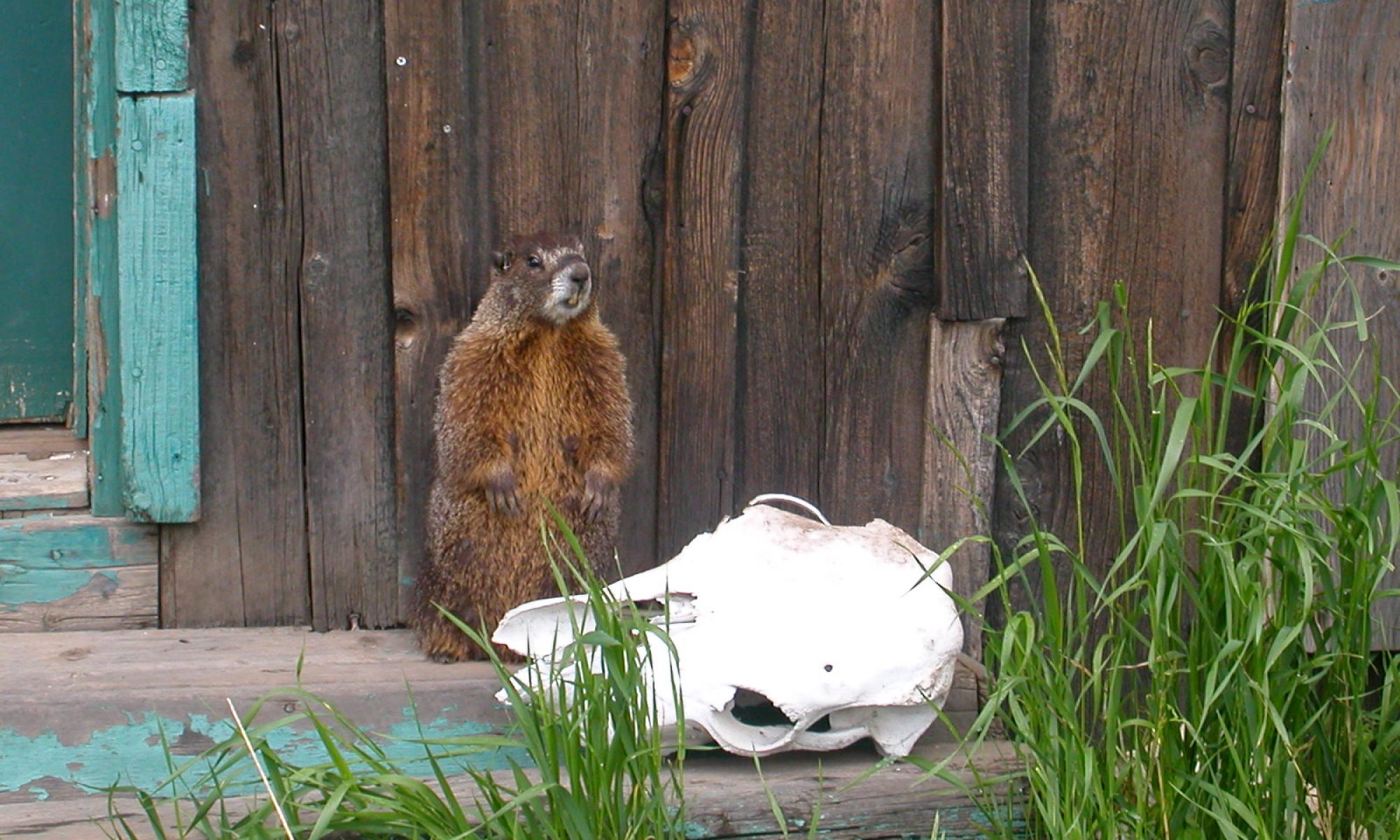| Yellow-bellied marmots (Marmota flaviventer) are one of the 15 recognized species of marmots–cat-sized, ground squirrels found throughout the Northern Hemisphere. The yellow-bellied marmot is widely distributed through the Rocky Mountains, the Intermountain West and the Sierra Nevada and White Mountains in California. At this point, it’s neither threatened nor endangered and thus makes a good species for detailed study of its population biology and behavior. The long-term database accumulated since 1962 makes this a priceless system for studying factors that drive changes in population size. |
The behavior and population biology of the marmots of the Rocky Mountain Biological Laboratory (RMBL), a private, non-profit field station in the Rocky Mountains near Crested Butte, Colorado, have been continuously studied since 1962. University of Kansas Professor Kenneth B. Armitage started this long-term study in 1962 and led it through 2001. Over the years he supervised a number of PhD and MS students who worked on the marmot project. In 2001, Daniel T. Blumstein, Professor in the Department of Ecology and Evolutionary Biology at UCLA, took over the day-to-day management of the marmot project and now Dan shares management of the project with University of Ottawa Professor Julien Martin. Dan and Julien collaborate widely with others who bring a diversity of skills and interests to the study of the RMBL marmots.
Ken’s initial goals were to test the idea that populations were regulated by intrinsic mechanisms rather than by extrinsic factors. Social behavior was proposed as the major intrinsic factor that could affect reproduction and dispersal. Yellow-bellied marmots were chosen for this research because they live in social groups and are diurnal. Thus their behavior could be directly observed and its effect on population dynamics quantified. Such long-term studies are both rare and valuable.
Most ecological studies last about 2-3 years; the duration of fieldwork for a MS or PhD student. With only two or three years of study, we must select our questions carefully and we are not typically able to gain insights into the population biology (the growth and decline of populations) for species, like marmots, that may live up to 16 years in the wild. Long-term studies of individually marked animals provide priceless insights into how animals adapt to environmental variation and allow us to identify those factors that influence population dynamics, including extinction. They allow us to study evolutionary dynamics in nature. They become increasingly productive over time because there is a detailed knowledge base on which to expand upon.
Over the years, the marmots have taught us a lot. Browse our publications to learn more! As of December 2021, the RMBL Marmot Project had an h-index (the number of papers cited at least that many times) of 69 and an i-10 index of 206!
A special thanks to major sponsors and research facilitators…
|
|
 |
 |
Some of this material is based upon work supported by the National Science Foundation under Grant Number (DEB-1119660, DEB-1557130 and other grants issued to the RMBL). Any opinions, findings, and conclusions or recommendations expressed in this material are those of the author(s) and do not necessarily reflect the views of the National Science Foundation.
Last modified: 29 June 2022
